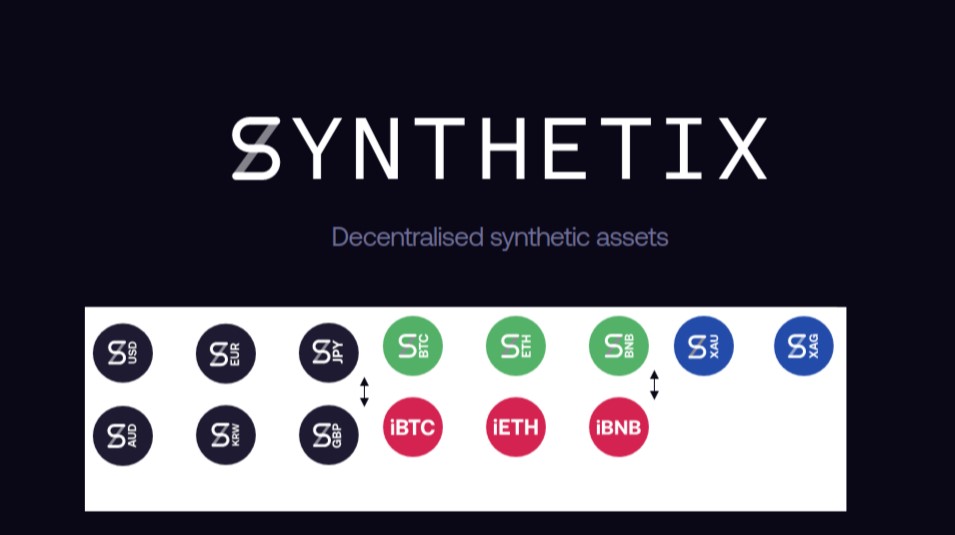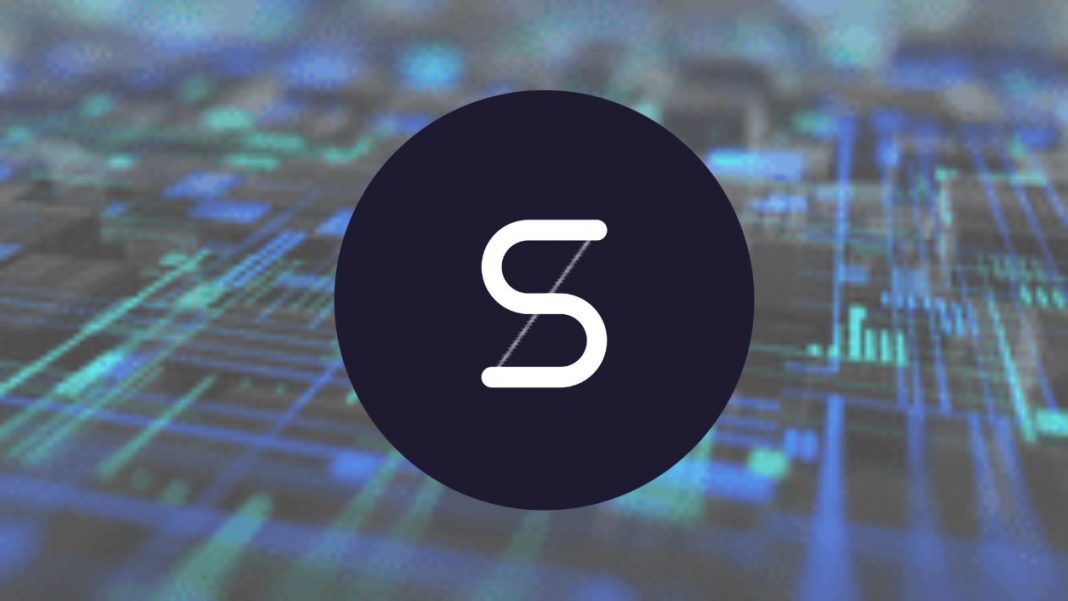Synthetix is one of the most unique and wildly successful DeFi projects in crypto. It consists of a decentralized exchange and an asset issuance platform built on Ethereum.
Synthetix allows users to issue and trade these so-called synthetic assets, which are representations of real assets such as cryptocurrencies, fiat currencies, stocks, commodities, and virtually anything that has value. As part of keeping the system together, the platform also has a money-making scheme (staking) in place.
In this guide, we are gonna go indepth on how the system works and relates with one another without dabbling into jargons ‘normal’ crypto people couldn’t understand. And of course, no DeFi guide is complete without showing the steps to monetize the platform. SNX staking is one of DeFi’s hottest passive income-generating strategies today.
Table of Contents
Background

Synthetix was originally created as Havven back in 2017. It was founded by Kain Warwick, who happens to also be the creator of Australia’s largest crypto payment platform. Havven was able to raise about $30 million via an ICO held in March 2018, amidst the crash of the market.
Among the executive team is CTO Justin Moses, who was the Director of Engineering at MongoDB, as well as Senior architect Clinton Ennis, who has 18 years experience as a software engineer and was the former Architect Lead at JPMorgan Chase.
What is Synthethix?
Synthethix is a DeFi ecosystem consisting of a decentralized exchange and asset issuance platform maintained by a staking-based incentive mechanism. It allows users to speculate on cryptocurrencies and just about any real world assets like stocks, fiat currencies, precious metals, etc. Like most DeFi projects, Synthetix is built on Ethereum.
The main goal of the project is to keep the exchange running and maintain its decentralized structure through an incentive mechanism based on a combination of staking, collateral, fees, and inflation. Basically, it allows anyone to create synthetic assets that can track the price of its real-world counterpart. This can be done by locking up the platform’s native asset SNX into the protocol.
One of the key selling points of the Synthetix project is that it can funnel some of the trillions of dollars of assets from traditional financial markets to the Ethereum network. And it does this through decentralized and permissionless means.
Imagine having everyone in the world given the ability to gain exposure to traditional markets like Tesla stocks, high premium bonds from foreign nations, real estate, etc. without having to deal with tedious financial regulations and requirements.
On the seller side, individuals can easily mint whatever synthetic assets they want or can access to, and earn passive income from the fees generated from people buying the synthetic assets. With that in mind, the Synthetix team and community envisions a world where anyone can create or be exposed to any asset they want and trade them in a global permissionless network.
Synthetix Exchange
The Synthetix Exchange is a decentralized exchange (DEX) built on the Synthetix protocol that launched in 2018. It currently lists 19 assets and has 31 trading pairs available. As of July 4, it’s last trading volume is reported to be at roughly $13.7 million, averaging between $13.5 to $14 million per day.
As a permissionless exchange, it has no border restrictions and grants anyone in the world access to its market. To trade on the exchange, simply go to Synthetix.exchange and connect using any web3 wallet such as MetaMask.
Interface

As you can see from above, the exchange interface is simple and easy on the eyes (it has light mode too). The only drawback is that it’s trading view uses a line chart instead of a candle chart, which most traders use. We’re not sure why Synthetix decided to remove their candle chart.
Fees
The DEX charges users with 0.30% for both maker and taker fees for every trade. This is quite high compared to the industry standard for exchanges, which is 0.15%-0.25%. Some new exchanges are even charging as low $0.10% or don’t charge at all.
For what it’s worth, the fees will be used to reward the stakers who are constantly providing tokens and liquidity to the exchange. Furthermore, there are no withdrawal fees since trading is executed directly from wallet to wallet.
And remember, you still have to pay extra fees for gas since you’re technically using the Ethereum blockchain for your trading. Gas costs generally depend on the number of users using Ethereum.
Exchange security
Hacks are commonplace in the DeFi space. And Synthetix, unfortunately, has its own incident back in June 2019 when cybercriminals were able to loot 37 million synthetic Ether (sETH). And there is no guarantee that something like this won’t happen to Synthetix again.
However, DeFi platforms like Synthetix are expected to become more secure and better over time as they develop more robust and secure protocol upgrades, as well as become more ‘tested’ in the treacherous waters we call the cryptosphere.
Native Assets
The Synthetix platform has two different types of tokens:
- SNX tokens
- Synths
SNX Token
SNX is the main token of the platform and is used to create synthetic assets (Synths). SNX stakers can buy SNX tokens from any crypto marketplace and lock them in a compatible wallet.
Once the SNX token are locked up, they can be used to mint new Synths.

The SNX monetary supply was deflationary up until March 2019, when Synthetix implemented an inflationary monetary policy to incentivize stakers to create more Synths. The total amount of SNX issued was changed from the initial 100 million tokens to 250 million tokens by 2025.
After the implementation, the network saw a huge spike in user participation, as well as an accompanying jump in the value of SNX.
Although SNX was not created as an investment tool per se, the token has seen a massive surge in price very recently. It went from $0.79 at the start of June to about $2.54 in July.
Synth
Synth tokens are the synthetic assets created when locking up SNX tokens. They are technically representations of real world assets in the form of Ethereum-based tokens.
Types of synths
- Fiat Synths: sUSD, sEUR, sKRW, etc.
- Crypto Synths: sBTC, sETH, sBNB, etc.
- Stock Synths: sTSLA (synthetic Tesla), sAAPL (synthetic Apple), etc.
- Commoditity Synths: sAu (synthetic gold), sAg (synthetic silver), etc.
- Index Synths: sDEFI, sCEX
- The sky is the limit.

Stakers incur debt when minting Synths. As a consequence, they have to pay back the same value in Synths before they can retrieve the locked-up SNX. The value of a Synth is subject to change over time.
Therefore, a user might have to pay a different amount of Synth when they withdraw compared to the time the Synth was newly minted. Uniquely, issuers are not required to pay the same type of Synth that they have initially minted. The system accepts any type of Synth to repay a debt as long as it has the same market value as the Synths they ought to pay.
Another requirement for issuing Synths in the system is a collateralization rate of 750%. For instance, if you want to mint 100 sUSD, you need to lock up $750 worth of SNX tokens. This large collateralization requirement is necessary to cushion the platform against sudden and/or extreme market movements.
If the ratio drops below 750%, the fee rewards become unclaimable unless the ratio is brought back to 750% and above. This mechanism is meant to keep the price of Synths stable.
It needs to be noted that holding a Synth is not the same as actually holding an asset. For instance, a sTSLA token has the same price as a Tesla share, but without the dividends a Tesla shareholder might receive.
How To Make Money Staking SNX
Before you dive into the walkthrough, make sure you are aware of the risks involved in staking. While their risks may not be as high as investing in an ICO, staking rewards don’t come for free either.
By minting Synths, you claim a fraction of the system’s debt pool. This debt pool accounts for the total value of all Synths in the system. Furthermore, this debt can rise and fall independent of the original value of your minted Synths, since it is based on the exchange rates and supply of Synths.
Let’s take an extreme scenario. Say, the majority of Synth holders are holding sBTC, then the price of BTC doubles. In that case, the size of the debt pool will increase drastically, which means the debt of each staker would also increase proportionally to the amount of increase in total debt of the system.
If you’re all good with that, then let’s begin your staking journey. First of all, you must acquire SNX tokens first. You can buy them from several exchanges in the space.
After you have acquired SNX, be sure to transfer them to a web3 wallet; either MetaMask, Trezor, Ledger, WalletConnect, or Coinbase wallet.
Once you have your SNX in a web3 wallet, visit Mintr. Mintr is a dApp that providers users with an intuitive interface for minting Synths, managing SNX, and simply participating in the Synthetix ecosystem in general.

Connect your web3 wallet to Mintr, and you will be directed to the homepage. The wallet details are displayed on the left-side while the functionality options are placed on the right.

If you want to mint sUSD for instance, you’re gonna have to input the amount of sUSD you want. And remember, the collateralization requirement is 750%. As of the time of writing, $750 is worth 318.03 SNX, so that’s the amount I need to pay in order get 100 sUSD.
As you can see from below, I do not have the required balance since this wallet is for demo purposes only. But when you’re working with the real thing, all you gotta do is click ‘MINT NOW’ after you’ve input the right amount of sUSD or whatever token you choose.

After clicking ‘MINT NOW’, you need to confirm the transaction in your web3 wallet. Once confirmed, your SNX becomes automatically staked and you will receive a proportional amount of sUSD or whichever synthetic asset you created.
You can then begin trading your synthetic assets on the Synthetix exchange, as well as other exchanges that have synthetic asset trading pairs.
So how will you make money? There are two types of rewards you’ll get here:
- sUSD fee rewards generated from Synthetix exchange fees
- SNX inflation rewards
These rewards need to be manually claimed regularly (each fee period is typically once a week) or they will be returned to the Synthetix pool and given to other stakers. And remember, the collateralization ratio must be kept at 750% and above otherwise you can’t claim your reward.
Conclusion
Synthetix has become one of the leading projects in the DeFi space (currently the fourth largest in market cap) by offering derivatives and other synthetic assets to anyone in the world. DeFi has thrived in the last couple of years and is now considered one of the hottest subsectors in crypto.
Considering the trillions of dollars flowing in centralized finance (CeFi), DeFi platform like Synthetix have enormous room for growth in the next few years. And judging by Synthetix’s performance, it is likely to stay in the long run.
The question is, will it remain on top? It is currently competing with multiple equally-amazing projects that are offering similar solutions.



















